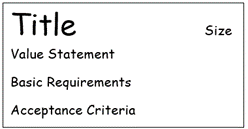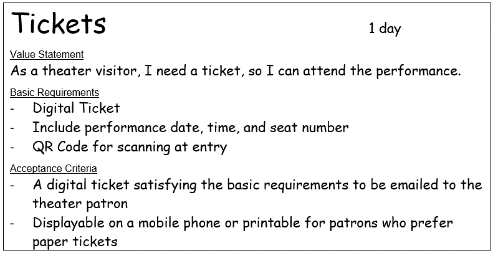Managing Uncertainty with Risk Management and Communication
“Sticking with … uncertainty, getting the knack of relaxing in the midst of chaos,
learning not to panic—this is the spiritual path.” ~ Pema Chodron
Spiritual or not, this is the path of the project manager. Accepting uncertainty is a mindset that we want to promote for all stakeholders. It is about accepting and managing change and the uncertainty it brings.
This article is a follow up to my February 2023 article Goals Are NOT Expectations[1]
I’ve experienced more than one organization that refrains from publishing long term plans, cost and revenue expectations, and budgets out of fear that they will be penalized when predictions are not realized. In other settings, project managers are held accountable for missing deadlines and budgets that seemed realistic when they were created and used to justify project approval. Even when changes out of the control of the project manager were the cause of the project’s schedule slippage, budget overrun, or failure to meet benefits expectations.
Paradox
There is a paradox. Everyone likes certainty, and that like, left unchecked, leads to problems.
It is fine to like certainty but expecting it causes dissatisfied stakeholders and project failure. While we try to approach certainty, we recognize that, with few exceptions, it is unattainable.
The Best Made Plans
“The best-laid plans of mice and men often go awry.” – Robert Burns
Burns got it right. Schedule and budget as best we can, and the next day there can be change, a sickness, storm, strike, or any random event that disrupts the schedule and causes cost overruns. Even if you are clever enough to build in buffers, they can be blown through.
We know we can be certain of some things that, for example, we can be certain that there will be change, we can’t control everything that affects our projects and that things will not always be how we’d like them to be. However, we can never be certain of staff and resource availability, requirements, deliverables, cash flow, the completion of tasks, inspections, tests, and more.
Since the certainty of a plan is a pipedream, we are left with two choices, don’t plan or manage uncertainty. Given Benjamin Franklin’s statement, “If You Fail to Plan, You Are Planning to Fail” the first option is not recommended. That leaves us with the need to manage uncertainty.
Doing it means accepting and letting go to manage expectations using risk and communication.
Accepting Reality
The first step is to accept that uncertainty is an unavoidable reality in projects. This acceptance is a mindset change from thinking that everything must come out the way we want it to everything will occur as it does, and we can work with it. Acceptance is the key to the “knack of relaxing in the midst of chaos.”
Acceptance does not mean passivity. With acceptance and confidence in your ability to handle anything that happens, acceptance puts you on a solid platform for success. You relax in the midst of chaos. Until you and your stakeholders accept uncertainty you cannot optimize your performance. Acceptance is what enables you to let go and let your own and your team’s skill and experience take care of business.
Then manage expectations using risk management, and communication, to get the reality of uncertainty across to all stakeholders and have them accept and let go.
Lets look at expectations to see their role in managing uncertainty and the way risk management and communication are keys to managing them.
Managing Expectations
Expectations are beliefs about the way something will come about in the future. When stakeholders have rational expectations, accepting uncertainty, they are more likely to keep calm and carry on, even when faced with chaos. With calm acceptance, the probability of success is high.
It is both the organization’s and project manager’s responsibility to make sure expectations are rational and reasonable. Risk management and communication are the tools for managing expectations.
The bottom-line expectation is to work for the best outcome possible while being ready for anything. It is expected that you as a project manager will plan and work to satisfy stakeholders. When expectations are well managed, stakeholders are more likely to be satisfied. Satisfied stakeholders mean project success.
Advertisement
[widget id=”custom_html-68″]
Communication
Communication is the means to achieve rational and realistic expectations.
Communication uses the results of risk management to inform and lead. Communication includes plan presentation and revisions, and continuous candid dialogue in the form of regular progress reporting and informal conversations.
For example, when presenting a plan stress the planned outcome in terms of a range of possibilities with different likelihoods of occurrence. Include statements like “While we are confident that we will meet our sche3dule and budget expectations, we acknowledge that there may be variance. Our risk assessment and plan goes into the details regarding that possible variance. We will regularly assess risks and performance to manage expectations.”
Mindset Training
Mindset training is a form of communication. Its purpose is to enable setting the stage for effective performance. Without mindset training that confronts biases and beliefs about the need for and ability to achieve certainty the project manager’s ability to manage expectations is limited.
Training time is limited. That is why mindset training is best done by embedding it in skills training as well as in regular meetings and presentations. For example, when giving a presentation to senior stakeholders take a few minutes to highlight that plans are predictions, and that they do not guarantee the predicted outcome. That is a great introduction to the part of the presentation that addresses risk. Posters and informal dialogues can help. In project management training include a segment on expectations management and the need to accept and manage uncertainty.
Risk Management
Risk management is the key part of planning that acknowledges and accepts uncertainty and manages expectations. Risk management seeks to identify and avoid the things that get in the way of success, and to promote the things that enable it
We assess risks and plan to remediate them with effective responses. We acknowledge that there are both known and unknown risks. We monitor and adjust throughout the project.
The degree to which risk management is a formal and regularly performed part of planning is a measure of whether uncertainty is accepted in an organization. Producing a plan that has a single, unqualified completion date, expense cap and benefits expectation is a sign that more mindset training and communication is needed.
Action
What do you and your organization need to do to create the mindset that uncertainty is unavoidable?







